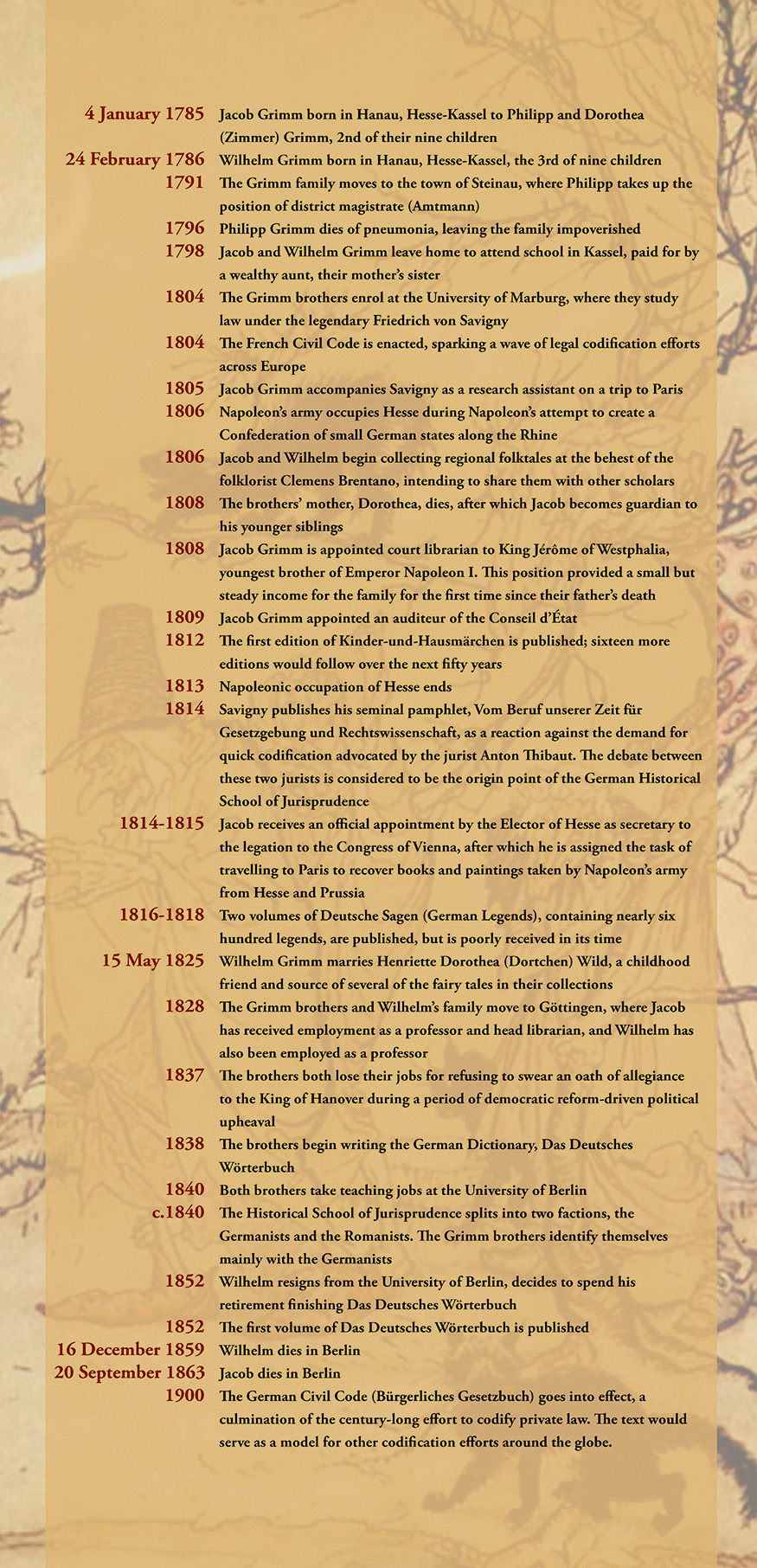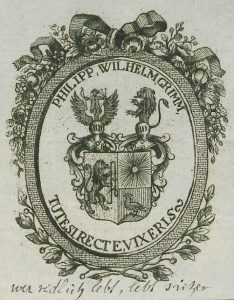About
The Grimm Brothers and the Law
O
nce upon a time, there were two brothers, Jacob and Wilhelm Grimm. Jacob (1785-1863) and Wilhelm (1786-1859) cared deeply about what was right and what was wrong. Their family crest contained the motto Tute si recte vixeris (“if you live right, you will live safely”), a principle their father, Philipp, a lawyer, worked hard to instil in his sons. Following in their father’s footsteps, the brothers studied law at Marburg under the renowned jurist, Professor Friedrich Carl von Savigny (1779-1861), founder of the so-called Historical School of law. Savigny believed that the spirit of the law could only be understood by studying the historical context in which laws were formed over time, and the customs, stories and languages in which the law was depicted. During an 1805 research trip to Paris with Savigny, Jacob Grimm’s interests began to shift from history to philology and literature as a means of understanding the law.
The Grimm Brothers began collecting folk stories while they were still in law school, at the encouragement of Savigny and his influential friends, the writers and folklorists Clemens Brentano (1778-1842) and Achim von Arnim (1781-1831). The collection of tales was not originally intended for children, but for other scholars. The Grimm brothers were curious about the link between an ill-defined sense of “German” identity (this was before Germany existed as a nation; during the lifetime of the Grimm brothers, “Germany” was made up of around 200 principalities) and the epic stories, sagas, and fairy tales to be heard in the region. The brothers searched for social rules as depicted through the fantastical scenarios of fairy tales. Law is omnipresent in popular culture, and fairy tales are no exception.
Fairy tales depict life in society, and encapsulate the rules that act as a framework for acceptable social behavior. Fairy tales have been passed from generation to generation, offering (and reinforcing) common understandings of how to interact in specific situations and specific societies. Despite being fantastical, fairy tales function as mirrors of society. “Respect your elders,” “safeguard your property”, and “keep your promises” are some of the many rules that underlie the Grimm Brothers’ collection of stories, along with admonitions “not to depart from the beaten path in the woods” and “not to open the door to strangers.” With the Märchenschatz, the Brothers Grimm presented readers with a household manual of behavior. Their stories defined the roles assigned to social classes and genders, while defining both individual traits and group identities. In reading these instructive tales to children, parents presented these rules, while also reiterating them to themselves in the process. Readers young and old were confronted with the rules and, in most fairy tales, the consequences for not following them. We are still confronted with these rules today; the majority of us have been raised on some version of the Brothers Grimm fairy tales.
Timeline

